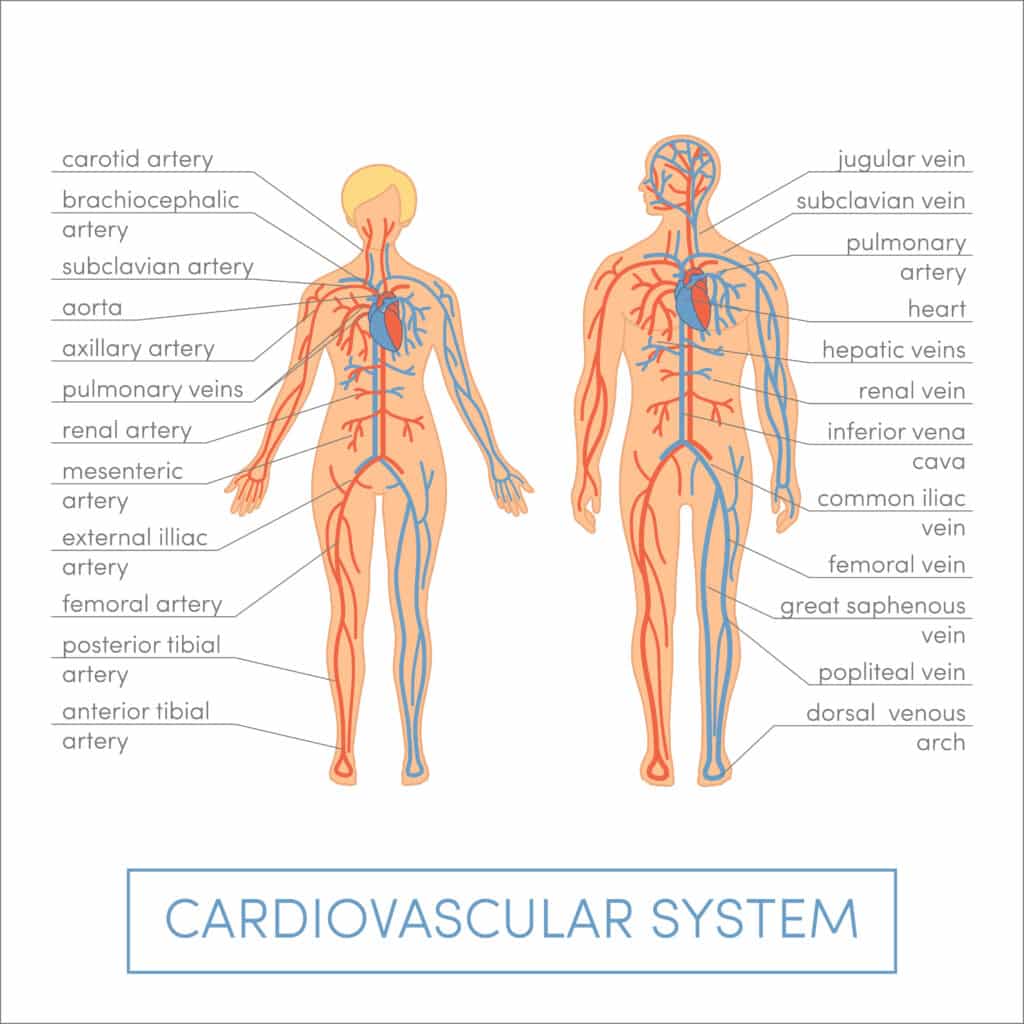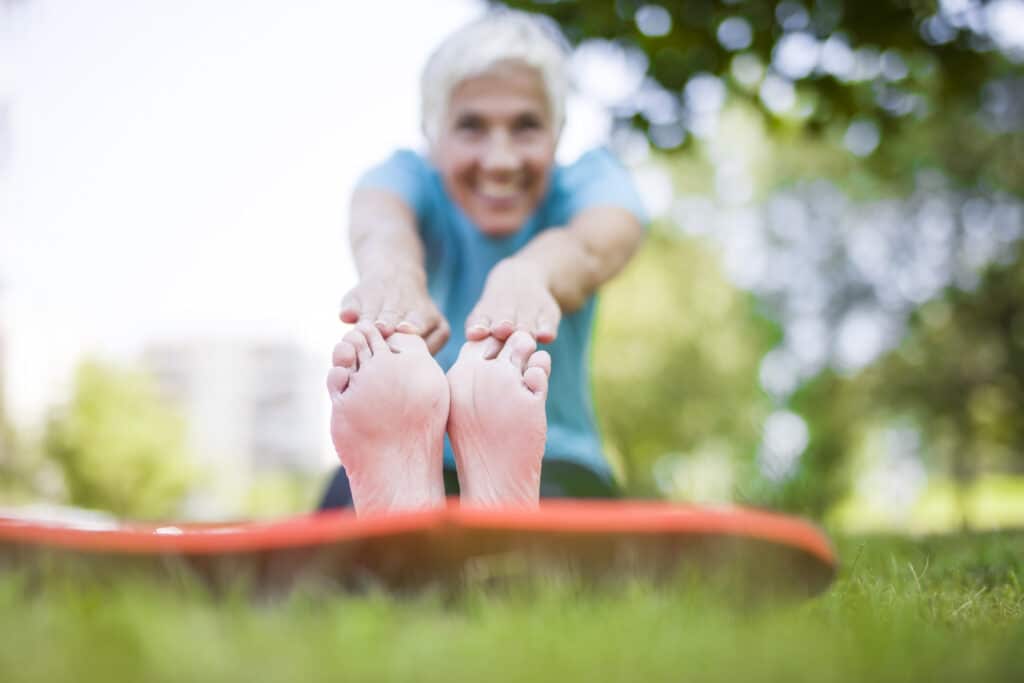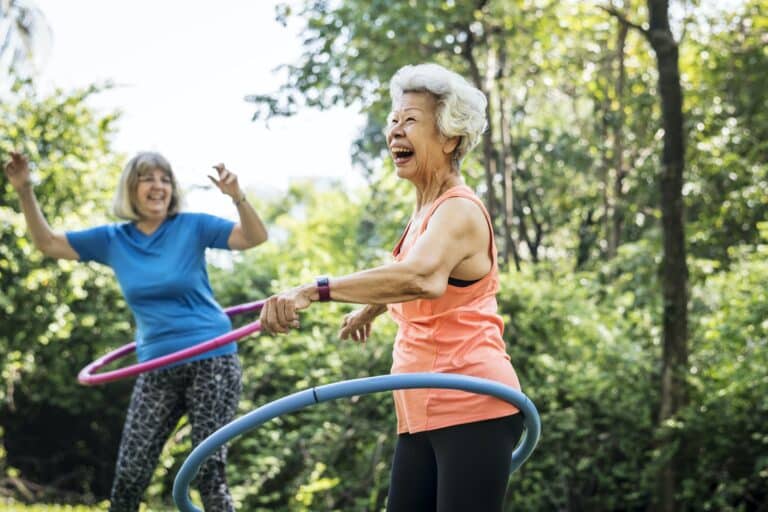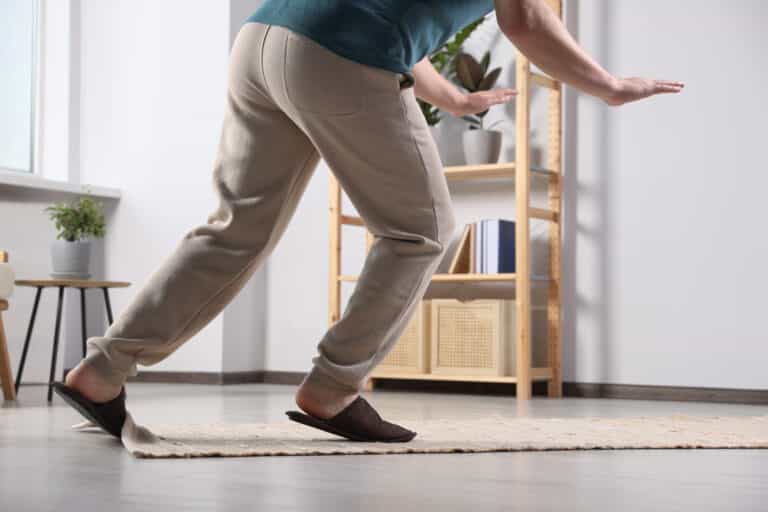As a physical therapist, I deeply understand the significance of maintaining good circulation, especially for my older patients. This guide focuses on how to improve circulation in the legs and feet, an area crucial for overall health and mobility in seniors.
- Understanding the Importance of Circulation for Active Older Adults
- The Causes of Poor Circulation
- Recognizing the Signs of Poor Circulation
- Lifestyle Factors Influencing Circulation
- Exercise and Activities to Boost Circulation
- External Support for Enhanced Circulation
- When to Seek Medical Help
- Key Takeaways
In this article, we’ll explore the fundamentals of circulatory health, provide practical exercises, and share insights from real-life examples to help you stay mobile and pain-free.
Understanding the Importance of Circulation for Active Older Adults
Your circulatory system is a remarkable machine, working tirelessly to ensure that every part of your body receives the essential nutrients and oxygen it needs. For active older adults, maintaining good circulation, particularly in the legs and feet, is crucial for overall health and mobility.
But how does this intricate system work to keep you moving and healthy? Let’s delve into the four primary components of your circulatory system.
The Basics of Circulation

The Heart and Arteries
Your heart, a powerful muscular organ, pumps oxygen-rich blood throughout your body via a network of arteries. These arteries are like the major roads, carrying this vital cargo to various destinations. This oxygen-rich blood is crucial for the health and functioning of your body’s cells.
Capillaries: The Essential Exchange Points
Along the arterial highways are more minor roads and pit stops – the capillaries. These tiny blood vessels are the essential exchange points connecting the arteries and veins. Here, nutrients and oxygen are transferred from your blood to your body’s cells, nourishing and ensuring their proper function.
Veins: The Return Route
After delivering their oxygen and nutrients, the blood becomes deoxygenated or emptied of oxygen molecules. The veins then take over, transporting this oxygen-depleted blood back to the heart and lungs for a fresh oxygen supply.
The Lungs
Your heart and lungs work together in careful coordination. Your heart pumps the oxygen-poor blood to your lungs, where it is recharged with a fresh supply of oxygen. The pressure in the vessels in your heart and lungs then propels this oxygen-rich blood back into circulation. This seamless coordination between your heart and lungs ensures your body gets the essential oxygen to function optimally.
Understanding how your circulatory system works can help you appreciate the importance of maintaining good circulation, especially as an active older adult.
The Causes of Poor Circulation
Poor circulation can result from various factors, but it often stems from problems with the heart, lungs, arteries, or veins. These vital components of your body’s circulatory system can sometimes falter due to disease or weakening with age.1
Heart-Related Conditions
Over time, our heart, much like other muscles in the body, can lose some of its strength. This weakening can lead to conditions like heart failure or cardiomyopathy, which affect the heart’s ability to pump blood efficiently. When the heart cannot contract with enough force, it can struggle to push blood throughout the body, leading to poor circulation.
Our hearts have four valves that ensure blood flows in one direction. However, if these valves become damaged or impaired, a condition known as valvular heart disease can occur.
This can lead to various complications, such as regurgitation (where blood flows backward), stenosis (a narrowing of the valves), or prolapse (where the valves fail to close properly). Any of these issues can disrupt the smooth flow of blood, ultimately leading to reduced circulation.
Conditions Affecting the Blood Vessels
Atherosclerosis
One common condition that affects blood circulation is atherosclerosis. This is a condition where fatty deposits, or plaque, build up on the inner walls of your arteries.
Over time, these deposits can harden and narrow the arteries, reducing blood flow. This can particularly affect circulation in the legs and feet, leading to a condition known as peripheral artery disease (PAD).
PAD is a widespread circulatory problem among active older people and is characterized by narrowed arteries in the extremities.
Venous Insufficiency
Another condition that can impact circulation is venous insufficiency. This occurs when the valves in the veins of your legs, which are designed to prevent blood from flowing backward, become weakened or damaged.
Consequently, blood can pool in the lower extremities, leading to varicose veins and chronic venous insufficiency. These conditions can significantly hinder proper blood circulation.
By understanding these potential causes of poor circulation, active adults can take proactive steps to maintain their circulation health.
Remember, it’s always essential to consult with a healthcare professional if you have any concerns about your circulation. In the next section, we’ll explore practical ways to improve circulation.
Recognizing the Signs of Poor Circulation
As we age, keeping a keen eye on our circulatory health is crucial. Poor circulation can exhibit itself in numerous ways, and early detection of these signs can empower us to take proactive measures to enhance our condition.
Cold or Numb Feet and Toes
One unmistakable sign of poor circulation is a consistent sensation of coldness or numbness in your feet and toes. This happens because restricted blood flow struggles to deliver enough warmth to these far-off parts of your body.
As an active person, you might especially notice this during colder seasons or after periods of inactivity.
Swelling in the Legs and Ankles
Unexplained swelling in your legs and ankles could indicate inefficient circulation. This swelling, also known as edema, can occur due to fluid buildup when your circulatory system isn’t performing optimally.
The swelling can lead to discomfort and, in some cases, pain that can impact your daily activities.
Muscle Cramps and Pain
Poor circulation can cause your muscles to receive inadequate oxygen and nutrients. This deficiency often leads to cramps, muscle pain, and a feeling of heaviness in your legs, particularly during physical activity.
If you’re an active older person who enjoys walking or exercising, these symptoms can be particularly noticeable and may limit your activity levels.
Slow-Healing Wounds or Ulcers
Slow healing of wounds, cuts, or ulcers on your legs or feet might indicate sluggish blood flow. Your body’s natural healing processes rely on efficient circulation to deliver essential nutrients and oxygen to the wound site. If these processes are slowed, you could be at a heightened risk of infection.
Discoloration, Such as a Bluish Tint
Skin discoloration can occur when oxygen levels in the blood are lower than usual due to poor circulation.
In some cases, this may lead to a bluish tint in the skin, especially in the extremities. This change in skin color can be a key visual indicator of circulation issues.
These signs are critical indicators of your circulatory health. If you recognize any of these symptoms, it’s crucial to take action. In the following section, we’ll discuss potential causes of poor circulation and the steps you can take to improve your circulatory health.
Lifestyle Factors Influencing Circulation

Understanding how our daily habits and lifestyle choices can significantly affect our circulation is crucial. Adjusting these lifestyle factors is often the first and most effective step in addressing circulation issues among my older patients.
Age and Chronic Health Conditions
With age, our blood vessels may lose some elasticity, and our circulatory system may not function as efficiently as it once did. This age-related decline can lead to poor circulation and related symptoms, underscoring the importance of proactive measures to support circulatory health in our later years.
Several chronic health conditions can directly affect your circulatory system. Diabetes, for instance, can damage blood vessels and lead to poor circulation, particularly in the legs and feet. High blood pressure, obesity, and high cholesterol are other health conditions that can contribute to circulatory issues.
If you have any of these conditions, it’s crucial to manage them effectively to improve your circulation with the help of your healthcare provider.
Understanding the potential causes of poor circulation is the first step in addressing the problem. By recognizing these factors, you can take proactive measures to improve your circulatory health, maintain mobility, and lead a healthier and more comfortable life as you age.
The Importance of an Active Lifestyle
Leading a sedentary lifestyle, characterized by extended sitting or periods of physical inactivity, can significantly impact your circulation. When we remain seated for extended periods, especially with our legs hanging down or flat on the ground, the force of gravity can cause blood to pool in our legs. This can lead to poor circulation, a common issue among active older people who may be sitting more due to retirement or physical limitations.
A lack of movement can result in a sluggish circulatory system, potentially causing discomfort and pain in the legs and feet. But don’t worry, the solution is quite simple and within your reach — get up and move more frequently! Aim to stand up and move around every 20 to 30 minutes.
If that isn’t always feasible, keep your legs elevated when resting and regularly perform exercises like ankle pumps, leg marches, or leg extensions. These muscle contractions in your legs can aid in pushing the blood back up towards your heart.
Incorporating regular low-impact activities like swimming, walking, or yoga into your routine can also be incredibly beneficial for your circulation. These activities improve blood flow and enhance overall health and well-being.
Diet and Circulation
The food we consume plays a vital role in maintaining our circulatory health. An unhealthy diet, particularly one high in saturated fats, processed foods, and excessive sodium, can lead to circulatory problems.
These dietary choices can contribute to the buildup of plaque in your arteries, restricting the free flow of blood. This could lead to a condition known as atherosclerosis.
Embrace a balanced diet of fruits, vegetables, lean proteins, and heart-healthy foods to maintain good circulation. Some specific foods supporting better blood flow include berries, fatty fish like salmon and mackerel, and leafy greens like spinach and kale.
The Impact of Smoking on Circulation
Smoking is a well-documented risk factor for poor circulation. The harmful chemicals in tobacco can damage your blood vessels, leading to constriction and reduced blood flow.
This not only affects your circulatory health but also increases the risk of severe health issues such as heart disease and peripheral artery disease. It is hard to underestimate the damage that smoking does to your body, and cutting back or quitting entirely is highly recommended.
Exercise and Activities to Boost Circulation
As we age, maintaining good circulation becomes increasingly essential. It’s not just about what we avoid but also what we actively do.
Regular exercise and physical activities can play a significant role in enhancing blood flow. As a physical therapist, I often recommend some practical exercises and activities to my active older patients to help boost circulation. Here are a few of my favorite exercises.
Exercises to Improve Circulation in the Hands and Feet
Ankle Pumps
Ankle pumps improve blood flow to the lower extremities, relieving stiffness and promoting flexibility. They are a simple yet effective way to stimulate circulation in the feet and lower legs, which often suffer from poor circulation in older adults.
- Sit on your bed or couch with your leg straight and your ankle hanging off the edge, sitting up straight if possible.
- Flex and point your feet ten or more times until you start to feel warmth building in your legs and feet.
- Repeat as needed.
Calf Raises
This exercise engages the calf muscles, which act as a natural pump to push blood back toward the heart, promoting improved circulation. They also strengthen the lower leg muscles, which can help prevent falls, a common concern for active older people.
- Stand with your feet hip-width apart.
- Lift your heels off the ground, rising onto your toes.
- Hold for a moment, then lower your heels back to the floor.
- Repeat this ten times.
Leg Swings
This movement stimulates the muscles in the legs, enhancing blood flow and relieving muscle tension. They are a great way to warm up before a walk or other physical activities.
- Find a sturdy support, like the back of a chair.
- Stand on one leg and swing the other leg gently forward and backward.
- Aim for ten swings for each leg.
Incorporating these exercises into your daily routine, even for just a few minutes daily, can significantly affect your circulatory health. Start slowly and gradually increase the duration and intensity as you become more comfortable. Remember, every bit of movement counts!
Incorporating Relaxation Techniques
Relaxation techniques, such as yoga and deep breathing, play a vital role in improving circulation by reducing the impact of stress on the body.
When we experience stress, our bodies release stress hormones, constrict blood vessels, and raise blood pressure. By engaging in relaxation practices, we counteract these stress responses, promoting a state of calm and reducing tension.
This, in turn, allows blood vessels to dilate and blood to flow more freely, enhancing circulation to the legs and feet.
Yoga
Yoga improves circulation by enhancing flexibility, reducing muscle tension, and promoting relaxation. It also encourages mindful movement, which can help active older people stay in tune with their bodies and prevent injuries.
Gentle yoga poses, such as the child’s pose, downward dog, and legs up the wall, promote flexibility and relaxation. Look for beginner-level classes in your community or online videos to get started.
Deep Breathing
Deep breathing reduces stress, lowers blood pressure, and supports overall relaxation, positively impacting circulation. It’s a simple but powerful tool for promoting circulatory health.
Find a quiet place to sit or lie down. Take slow, deep breaths through your nose, allowing your abdomen to rise, and exhale slowly through your mouth. Try to spend a few minutes each day practicing deep breathing.
By incorporating these exercises and relaxation techniques into your daily routine, you are taking proactive steps to improve your circulatory health. But remember, these are just a few of the many ways to promote good circulation.
External Support for Enhanced Circulation
Lifestyle modifications and exercises play a pivotal role. Still, certain external support options, such as compression garments and hydrotherapy, can serve as valuable allies, providing substantial assistance in enhancing blood flow.
Compression Garments
Compression garments, including compression stockings, are specifically engineered to exert gentle, consistent pressure on your legs and feet. This especially benefits active older people with chronic venous insufficiency or varicose veins.
Not only do these garments help in promoting better circulation, but they also serve as a barrier against swelling in the legs and ankles. They achieve this by preventing the accumulation of excess fluid. Furthermore, they can relieve discomfort linked with poor circulation, such as aching or cramping in the legs.3
Hydrotherapy
Another effective method of enhancing circulation is hydrotherapy, also known as contrast baths. This treatment involves alternating between hot and cold water immersions.
The hot water dilates (or widens) your blood vessels, while the cold water causes them to constrict or tighten. This alternating pattern stimulates blood flow and encourages blood circulation to and from your extremities.
Beyond its circulatory benefits, hydrotherapy can also serve as a stress reliever. The warm and cold sensations can be calming, helping you relax and reduce stress, which can otherwise negatively impact your circulation.
Incorporating compression garments and hydrotherapy into your routine offers a practical, non-invasive way to support better circulation in your legs and feet.
These methods can particularly benefit active adults with chronic circulatory conditions or those seeking relief from circulation-related discomfort.
When to Seek Medical Help
As an active older adult, you must understand when to seek medical help. If you’re experiencing persistent, severe pain or notice sudden changes in your circulation, it’s crucial to consult with a healthcare professional.
Certain conditions, such as peripheral artery disease, require a medical diagnosis and treatment. Remember, timely intervention can help prevent complications and enhance your circulatory health.
Key Takeaways
- Good circulation is vital for active older adults, involving the heart, arteries, capillaries, and veins.
- Heart conditions, atherosclerosis, and venous insufficiency can cause poor circulation.
- Common symptoms of poor circulation include cold or numb feet, leg swelling, muscle cramps, slow-healing wounds, and skin discoloration.
- Lifestyle choices like staying active, eating healthily, and avoiding smoking significantly impact circulation.
- Exercises such as ankle circles, calf raises, leg swings, and relaxation techniques like yoga and deep breathing benefit circulation.
- Compression garments and hydrotherapy are helpful external supports for improving blood flow.
- Seeking medical help is essential for persistent severe pain or sudden changes in circulatory health.
References
- Naeije, R. (2013). Physiology of the pulmonary circulation and the right heart. Current hypertension reports, 15(6), 623-631.
- Trisnawati, I., Sudiana, I. K., & Supriyanto, S. (2020). Effect of Leg Exercise on the Lower Limb Circulation of Patients with Diabetes Mellitus: A Systematic Review. Jurnal Ners, 15(2).
- Eze, A. R., Comerota, A. J., Cisek, P. L., Holland, B. S., Kerr, R. P., Veeramasuneni, R., & Comerota Jr, A. J. (1996). Intermittent calf and foot compression increases lower extremity blood flow. The American journal of surgery, 172(2), 130-135.






